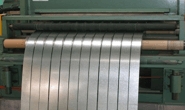Analysis

June 10, 2019
U.S. Manufacturing Technology Orders Decline in April
Written by Sandy Williams
Orders for metal cutting machines and metalforming and fabricating machines saw their lowest April rate since 2016. The Association for Manufacturing Technology reports manufacturing technology orders totaled $344.6 million in April, a decline of 16.5 percent from March and 17.6 percent year-over-year. For the first four months of this year, orders were down 11.6 percent compared to the same period in 2018.
A downward trend in technology orders was seen in most industries, with a few exceptions. Orders in the aerospace industry grew by single digits while orders in the automotive industry jumped 30 percent from March. Declines were especially profound in the contract machining sector and the engines and turbines industry. Agriculture technology orders have been in decline since February of this year from tariffs taking a toll on agricultural profits.
“Competition in the manufacturing technology market for ‘standard’ products continues to grow in intensity relative to the positive growth seen in engineered solutions,” said AMT President Douglas K. Woods. “Our members are telling us that the ready availability of products has eliminated the urgency for customers to invest in capital equipment now, while trade issues raise grave concerns about the continued strength of the manufacturing sector in the near future.”
On a regional basis, orders declined the most in the Southeast, falling 25 percent from March. “The only region to show growth from March levels was North Central-West, where slight declines in orders for metal cutting equipment were offset by robust growth in forming and fabricating equipment orders,” said AMT.
AMT’s report provides regional and national U.S. orders data on domestic and imported machine tools and related equipment. Analysis of manufacturing technology orders provides a reliable leading economic indicator as manufacturing industries invest in capital metalworking equipment to increase capacity and improve productivity. Numbers and all data in this report are based on the totals of actual data reported by companies participating in the USMTO program.







